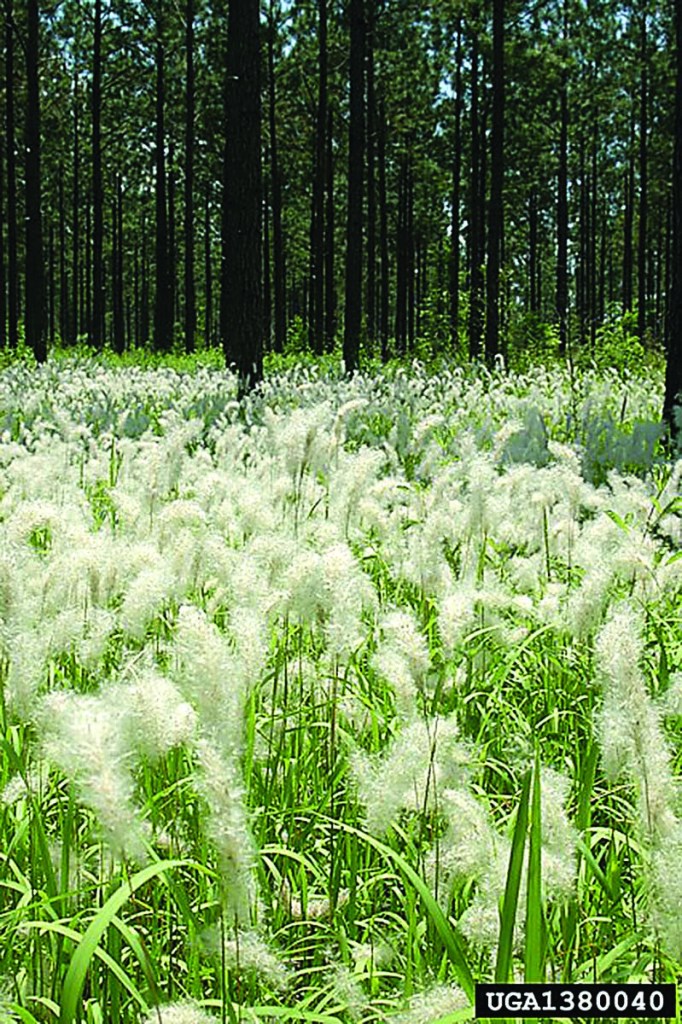Foresters battle invasive cogongrass
Published 10:24 pm Wednesday, October 18, 2017

- Cogongrass has been in America about 100 years, but it’s threatening some native plants in the Southeast.
MOULTRIE, Ga. — Some well known products have made their way west from Asia over the years — from Godzilla to gunpowder to Jackie Chan — and while those three were hits some of the others met with a less enthusiastic reception.
Add cogongrass to the latter category.
Trending
The term grass may be a misnomer, as its traits very much put it in the category of nuisance.
It can choke out any plant life in which it establishes itself, grows rapidly and is a fire hazard. It also can grow in nearly any type of soil, in full sun or in total shade —the only type of environment that stymies it is extremely wet conditions.
“It’s pretty much the perfect weed,” said Mark McClure, a Georgia Forestry Commission forest health specialist headquartered in Albany.
“Once it takes over it out-competes and overcomes all the other plants,” said McClure, whose agency was among the exhibitors in the Hunting and Fishing Section at Sunbelt Agricultural Exposition.
It also burns extremely hot — some 800 degrees. When landowners do prescribed burns, they can tell when the flames reach a patch of cogongrass by the high flames and black plume of smoke it emits, McClure said. After the fire as burnt out, trees that were in the vicinity of cogongrass often are found burned completely due to the intensity of the heat, while other trees farther from the weed suffer no long-term damage.
Cogongrass originated in Asia, and made its way to the United States in 1911 via the port at Mobile, Ala. It was used as a packing material for shipments, McClure said.
Trending
It did not turn out to be a gracious visitor.
“It grows three feet tall, McClure said. “It’s really thick.”
At one point some cattlemen in central Florida decided that because cogongrass grows tall and lush quickly that it would make a great food for their cows, McClure said. It turned out that the stalks have rough leaves that would cut cows’ mouths, so they wouldn’t eat it.
It also has a high content of silica, which is indigestible for cattle.
“There’s no wildlife that benefits from it,” McClure said. With its excessive vegetation and dormancy during winter months, it can provide a source of tinder that could start a wildfire if it ignites.
With its early roots in Alabama and Florida, the area where it is most often found is extreme Southwest Georgia, including Decatur and Miller counties.
The Forestry Commission has confirmed 1,156 infestations of the weed. Of those, some 176 are still active, with the remainder either eliminated or have not reemerged either one or two years after it was treated. The commission considers cogongrass eliminated if it is absent for three years.
That doesn’t mean it is nearly eliminated. Many landowners probably have it growing on their forestland and do not know it, McClure said.
Forestry Service personnel will treat and eradicate, at no cost, any confirmed cogongrass growing on an owner’s property.
Another factor that has prevented the weed from moving very far beyond counties bordering Alabama and Florida is that it has a no- or low-seed vitality, McClure said, meaning that it won’t germinate in many places. However, where seeds can germinate it thrives.
It also can spread easily. Each flower contains as many as 3,000 seeds, so a field of a few tenths of an acre can be home to millions of the tiny seeds.
Birds don’t feed on the seeds and spread them, but the seeds are very light and can blown by the wind, similar to a dandelion, McClure said. It also can hitch a ride on tree-cutting equipment when it is taken from a site where cogongrass is present to another where it has not been established.
Cogongrass grows from around April through early June.
Landowners can call their local Forestry Commission office to report suspected cogongrass or call 1-800-GA-TREES (1-800-428-7337).
“My recommendation, if it is flowering, keep your equipment out of it,” McClure said. “That way it won’t spread on your property and you won’t take it to another’s property.”





